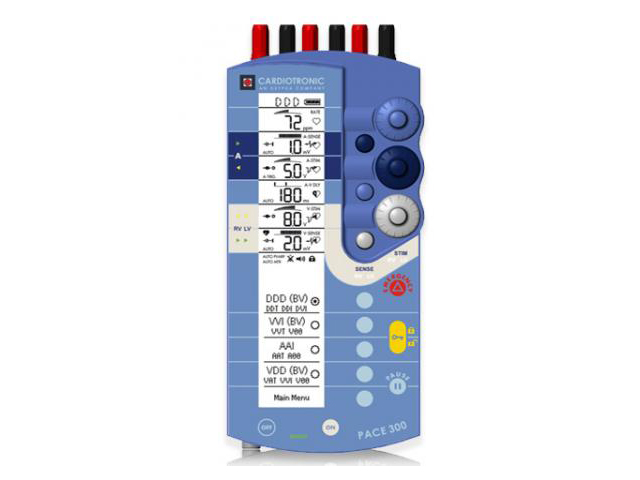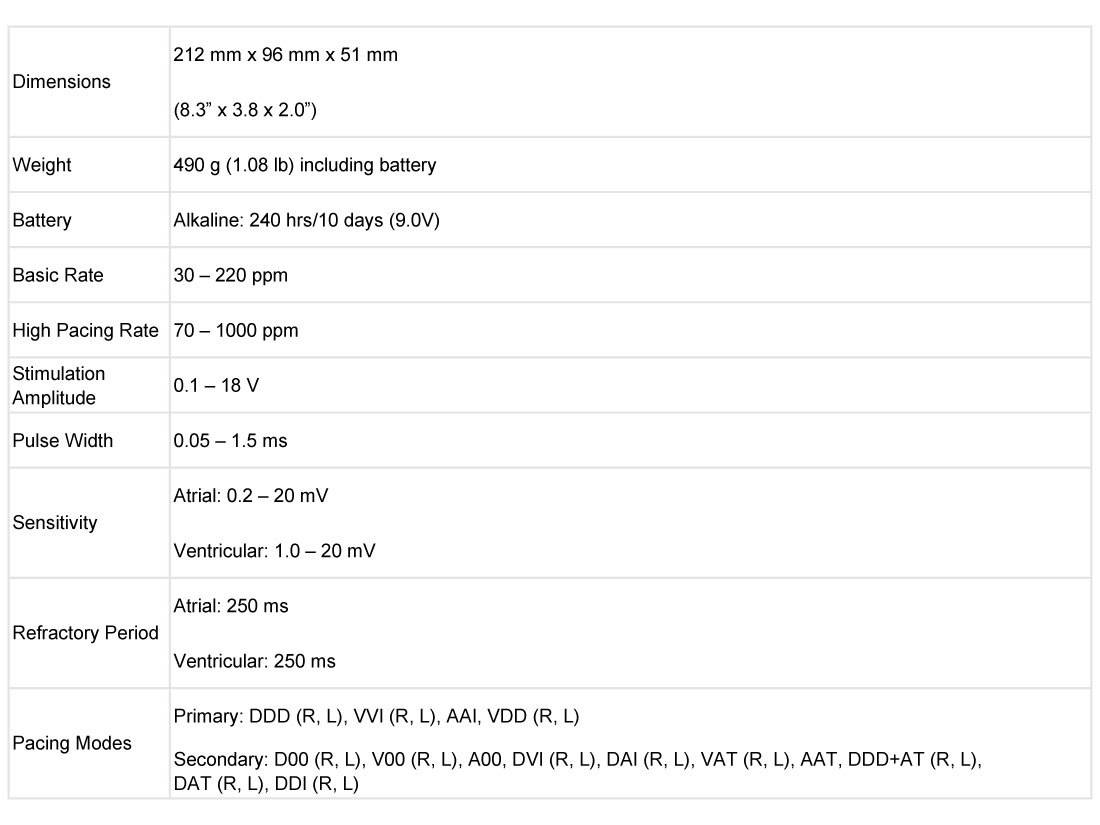Now Loading...
Products
Products


OSYPKA MEDICAL
PACE 300
Three Chamber Temporary Cardiac Pacemaker
The PACE 300™ is the world’s first three-chamber temporary cardiac pacemaker featuring biventricular (biV) pacing capability. The PACE 300 temporary cardiac pacemaker is designed to be used with cardiac pacing lead systems for temporary atrial, ventricular, A-V sequential, or biV pacing. The PACE 300 has applications where such pacing modes are indicated for therapeutic, prophylactic, and/or diagnostic purposes.
The PACE 300 is currently pending US market approval.
The novel technology and pacing options of the PACE 300 makes it the only choice for biV temporary pacing in the OR, ICU, and for electrophysiology studies:
‧ Three dedicated pacing terminals
‧ Fast access to three, dual, or single chamber pacing modes
‧ Auto Sense function automatically tracks P/R wave amplitudes and adjust atrial and ventricular sensitivities accordingly
‧ Statistical recording and analysis of pacer activity
‧ Interface with Pacemaker Clinic™ for automatic CRT optimization
Intuitive User Interface
The user friendly interface of the PACE 300 allows for effortless patient management for atrio-ventricular synchronous pacing supplemented by two individually programmable ventricular pacing channels and a programmable inter-ventricular delay (VVD). The dedicated pacing terminals allow for untangled and easy identification of pacing leads into the heart, as well as having dedicated dial knobs to set individual amplitude and sensitivity settings for each chamber.
Statistical Results
The PACE 300 has the capability to records and analyzes the activity of the pacer, including overall sensed cycles, paced cycles, and the percentage of paced cycles. Clinicians can use these statistical results to help determine the patient’s dependency on pacing.
Pacer Optimization
The PACE 300 can interface directly with Cardiotronic’s AESCULON® hemodynamic monitor (not included) using the Pacemaker Clinic™ application for fast and easy pacer optimization. With just one button push, Pacemaker Clinic automatically cycles through timing combinations and recommends optimal timing adjustments based on hemodynamic assessments for each combination. Data is displayed in a tabular format and can be printed as a report or exported to a PC.
Improvement of Using Cardiac Output and Biventricular Pacing Post-Cardiac Surgery
Recent clinical publications have shown the added benefit in using temporary biventricular pacing, as opposed to standard dual chamber pacing in post-cardiac surgery patients.1,2,3 Furthermore, the optimization of temporary biV pacing has been shown to help treat patients with low output states.4,5
The increasing evidence pointing to benefits such as decreased morbidity and mortality rates in post cardiac surgery patients creates the perfect platform for the PACE 300.
Specifications

Comment
Flynn et al. Temporary left ventricular pacing improves haemodynamic performance in patients requiring epicardial pacing post cardiac surgery. Eur J Cardiothorac Surg. 2005 Aug;28(2):250-3. http://www.ncbi.nlm.nih.gov/pubmed/15923120
Dzemali et al. Perioperative biventricular pacing leads to improvement of hemodynamics in patients with reduced left-ventricular function--interim results. Pacing Clin Electrophysiol. 2006 Dec;29(12):1341-5. http://www.ncbi.nlm.nih.gov/pubmed/17201840
Wang et al. Optimized temporary biventricular pacing acutely improves intraoperative cardiac output after weaning from cardiopulmonary bypass: a substudy of a randomized clinical trial. J Thorac Cardiovasc Surg. 2011 Apr;141(4):1002-8, 1008.e1. Epub 2010 Aug 30. http://www.ncbi.nlm.nih.gov/pubmed?term=Optimized%20temporary%20biventri...